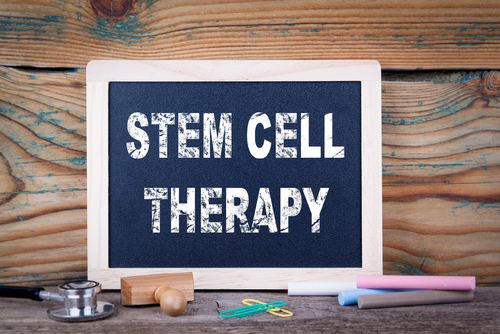Neural Stem Cell Transplant May Improve Survival, Function in ALS Patients, Trial Results Show

Transplanting human spinal cord-derived neural stem cells (HSSC) into the spine of patients with amyotrophic lateral sclerosis (ALS) was found to improve their survival and function, according to clinical trial investigators.
Results from the Phase 1/2 trials were compared to historical populations (controls), and the results were reported in the journal Annals of Clinical and Translational Neurology, in a study titled “Long-term Phase 1/2 intraspinal stem cell transplantation outcomes in ALS.”
Researchers had known that neural stem cell intraspinal transplants were a potential therapy for ALS based on evidence collected from in vitro and in vivo preclinical studies.
The U.S. Food and Drug Administration approved trials of HSSC transplantation in ALS patients based on safety results from animal testing.
The biopharma company Neuralstem recently announced the long-term follow-up results of the Phase 1 and Phase 2 trials of spinal neural stem cell transplants in ALS patients.
The Phase 1 trial (NCT01348451) evaluated the safety and feasibility of intraspinal injection of HSSC in 15 ALS patients. In the Phase 2 dose escalation study (NCT01730716), the company evaluated the safety of transplanting 2 to 8 million neural stem cells in 15 additional patients.
Both the Phase 1 and 2 trials confirmed the safety of HSSC transplants, but the number of participants was small, and the trials lacked control populations, which may affect the potential clinical relevance of this treatment.
In this study, the company compared the long-term clinical outcomes and survival of the ALS patients in the Phase 1/2 trials up to three years after transplant to matched participants in the Pooled Resource Open-Access ALS Clinical Trials (PRO-ACT) and the ceftriaxone (Rocephin) trial datasets.
The functional outcomes of HSSC transplants were measured using the ALSFRS-R scale, a validated questionnaire that measures physical function in daily life activities, and a composite statistic that combine functional and survival outcomes (ALS/SURV).
The analysis compared 1,108 participants from the PRO-ACT dataset to 21 patients in the Phase 1/2 trials, while 177 patients in the ceftriaxone trial group were compared to 20 patients from the Phase 1/2 trials.
Results of the comparative study showed significantly better ALSFRS-R scores 24 months after the neural stem cell transplants, as well as the ALS/SURV score, compared to matched controls from the two historical datasets from PRO-ACT and the ceftriaxone trial. Survival did not differ significantly between groups.
These results are expected to provide the data required to design a Phase 3 clinical trial.
“We are looking forward to completing a larger Phase 2b/3 multicenter study,” Eva Feldman, an MD and PhD, and senior author of the study, said in a press release.
“These data are encouraging and indicate that human spinal cord-derived neural stem cells may provide functional benefits to ALS patients,” said Rich Daly, the CEO of Neuralstem.
“We are grateful to the subjects who have participated in these trials and to the clinicians and caregivers involved in performing them,” he said. “These long-term follow-up data are extremely valuable to us in designing the company’s Phase 2b/3 clinical study to further evaluate NSI-566, Neuralstem’s cell therapy candidate, in the patient population.”






